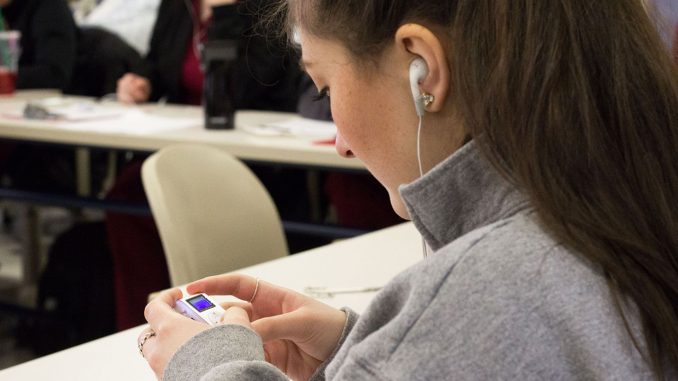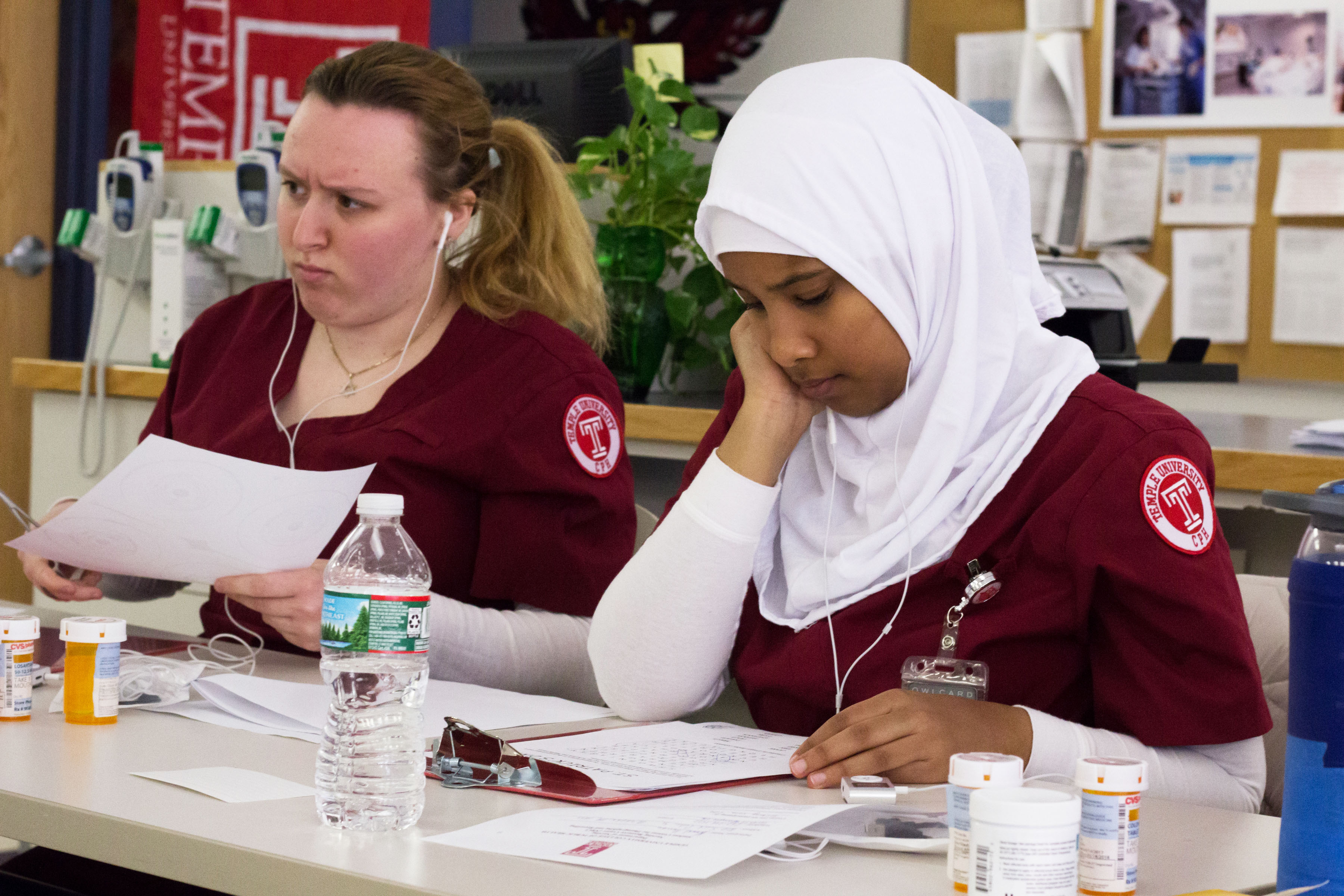
Barbara Stephens, a nursing professor in the College of Public Health, said everyone knows someone with mental illness.
But for people without mental illnesses, it is nearly impossible to understand the day-to-day experiences of people with disorders like schizophrenia — hallucinating and hearing disturbing voices and sounds.
This semester, the Nursing Resource Center is working to bridge that gap in experiences.
The Center, a smart classroom in the Pharmacy Building at the Health Sciences Campus, is offering an audio simulation for nursing students to understand what it’s like to have schizophrenia.
The simulation uses MP3 players containing different types of voices and sounds to show students the type of auditory hallucinations people with mental illness can experience. During the simulation, nursing students have to complete a series of tests and tasks that would usually be simple for them, like puzzles and math tests, while listening to the audio.
“It just makes it that much easier to be able to understand what your patient is going through,” said Chelsea Comerford, a junior nursing major who participated in the simulation. “It was really cool to go through hearing what a lot of the patients that we work with in the hospital [hear], because we deal with mental illness pretty much on every unit and everywhere you go.”
John Duffy, the director of the Nursing Resource Center and a nursing professor, said the simulation starts with muffled sounds and some music. It also changes from soft to louder voices, and contains a few obscenities.
“It replicates what a person who is hearing voices or is having auditory hallucinations might experience,” Duffy said.
The mental illness simulation is intended to give nursing students a better understanding of their future patients and mental health in general. It’s also a requirement for Generalist Nursing Practice III, a class for second-semester junior nursing majors. As a part of this class, the students have to do clinical practice, or field work at hospitals or other medical facilities.

Zoey Parmarter, a junior nursing major, said the simulation helped her learn to be more sympathetic toward her patients with mental illnesses.
“It’s not easy to ignore [the hallucinations] and continue doing things in your life,” Parmarter said. “It really kind of puts a stop to your life. It was upsetting to hear that in your head, like these weird creepy voices telling you that you’re not good enough.”
Both Duffy and Stephens are instructing the simulation this semester. After they first discussed the idea, Duffy, who has about 12 years of simulation experience, researched how to implement one at Temple.
“It’s very hard to get realistic simulations for mental health and mental illness, so this is such a wonderful opportunity,” Stephens said.
Duffy helped facilitate this simulation at other nearby universities like Widener University and Thomas Jefferson University.
The simulation itself is broken up into sections. Before it begins, Duffy conducts a pre-briefing, during which he tells students they can turn the MP3 player off if the experience is too overwhelming for them. For those cases, Duffy and Stephens have a safe room set up for students.
“It’s important to be sure that you are creating a safe learning environment especially with this particular simulation,” Duffy said. “We want to take special time in that pre-briefing section to be able to say…‘Take a deep breath. … Protect yourself.’”
Students then participate in the simulation, listening to the voices and sounds on the MP3 players while trying to complete a series of tests and puzzles.
In the debriefing, which is conducted after the simulation by Stephens, she does a follow up with the students about their experience and feelings.
“There are things that are said on the MP3 player that were kind of anxiety-provoking to the students,” Stephens said. “They were able to do tasks, they were able to get some things done, but they were not able to do everything that they wanted to.”
Next year, Duffy said the simulation will be more challenging. Students will have to move into several rooms and conduct face-to-face interviews with people while experiencing the simulation.
Stephens thinks the simulation is a great way for students to truly understand what mental illness is like.
“I can talk about it,” Stephens said. “I teach it. It’s what I do, but until you experience something like that you really don’t understand it.”



Be the first to comment